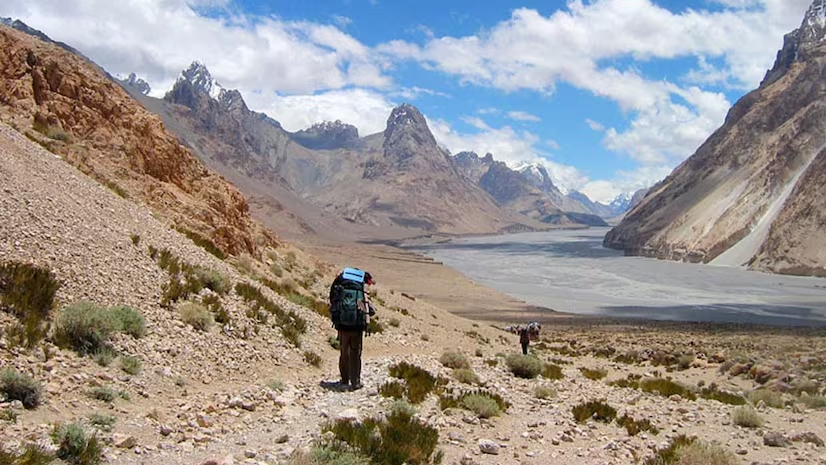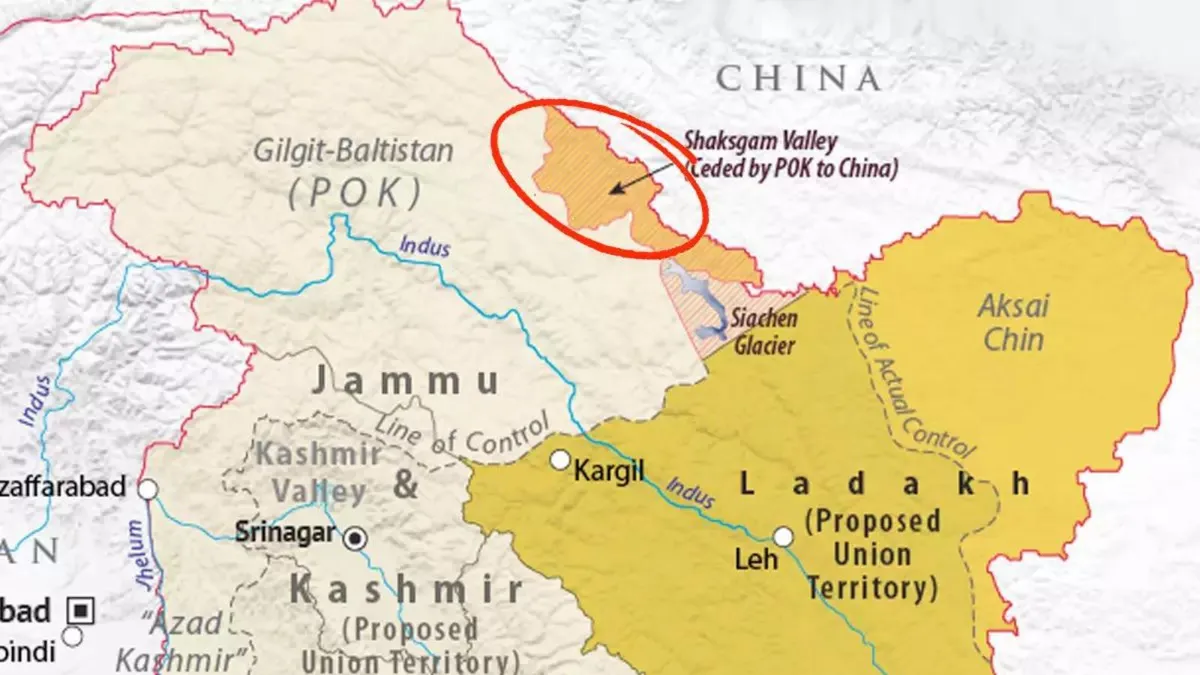Description

Copyright infringement not intended
Picture Courtesy: https://www.business-standard.com/external-affairs-defence-security/news/shaksgam-valley-how-pakistan-unlawfully-ceded-indian-territory-to-china-124050300944_1.html
Context: India raised a strong protest to China over construction activity in the Shaksgam Valley, supporting its ownership of the region and rejecting the 1963 China-Pakistan boundary deal, which attempted to transfer the area to Beijing.
Historical Context
- The Shaksgam Valley was ceded by Pakistan to China in 1963 through a boundary agreement known as the Sino-Pakistan Agreement.
- India does not recognize this agreement and considers the entire region of Jammu and Kashmir, including areas under PoK, as an integral part of India.
India's Position
- India has consistently maintained that the Shaksgam Valley is part of its territory and rejects any attempts by Pakistan or China to alter the status quo in this region.
- The recent protest lodged by India with China over infrastructural development in the Shaksgam Valley highlights New Delhi's stance on this matter.

About Shaksgam Valley
- The Shaksgam Valley, also known as the Trans-Karakoram Tract, is a region of strategic importance located within the Hunza-Gilgit area of Pakistan-Occupied Kashmir (POK).
- The Shaksgam Valley is situated in the northern part of POK, bordering the Xinjiang Province of the People's Republic of China (PRC) to the north.
- The Shaksgam Valley is a disputed territory claimed by India but is currently under the administrative control of Pakistan.
- India disputes Pakistan's cession of the Shaksgam Valley to China in 1963 through a boundary agreement between Pakistan and China, which India does not recognize.
Background and Boundary Agreement
- In 1963, Pakistan and China signed a boundary agreement to settle their border differences, resulting in Pakistan ceding the Shaksgam Valley to China.
- Article 6 of this agreement stipulated that the boundary issue would be revisited after the settlement of the Kashmir dispute between Pakistan and India, with negotiations planned to sign a formal boundary treaty.
|
Karakoram Highway
●The boundary agreement between Pakistan and China in 1963 laid the foundation for the construction of the Karakoram Highway, a strategic road link connecting Pakistan and China through the Karakoram mountain range.
●The Karakoram Highway, completed in the 1970s with the collaboration of Chinese and Pakistani engineers, has strategic significance for trade and connectivity between the two countries.
|
Current Status and Geopolitical Implications
- The status of the Shaksgam Valley remains a contentious issue within the broader context of territorial disputes involving India, Pakistan, and China.
- India's claim over the Shaksgam Valley is part of the larger dispute over the region of Jammu and Kashmir, reflecting complex geopolitical dynamics in South Asia.

Source:
Indian Express
|
PRACTICE QUESTION
Q. Assess the impact of infrastructure development by both India and China along the disputed border. How have road construction, military bases, and other infrastructure projects influenced the dynamics of the conflict and affected local populations?
|












